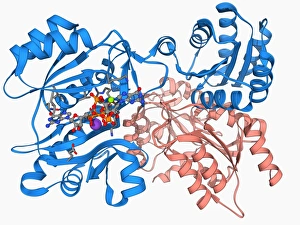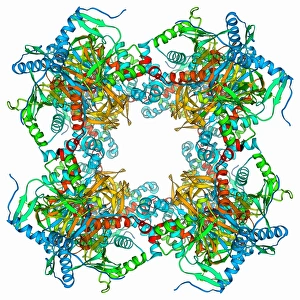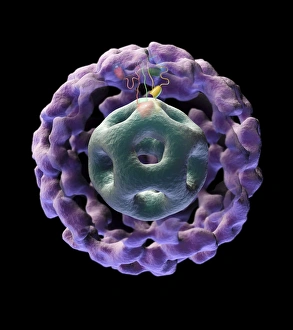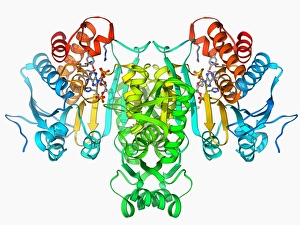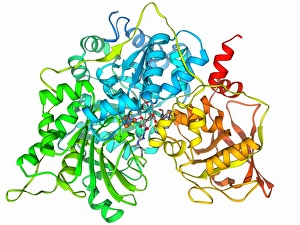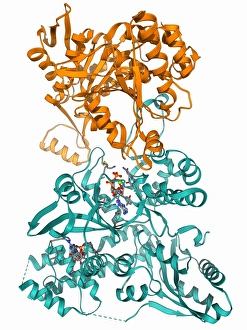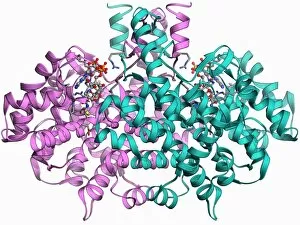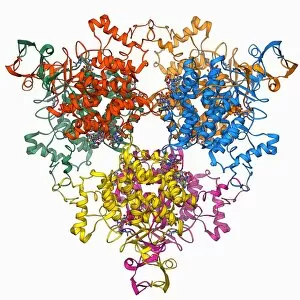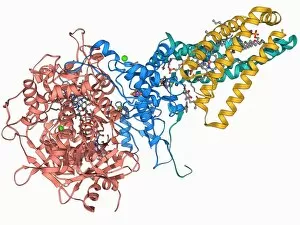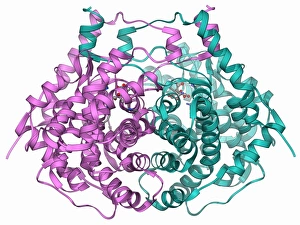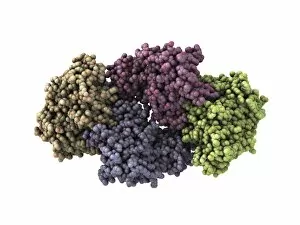Krebs Cycle Collection
"Exploring the Intricacies of the Krebs Cycle
All Professionally Made to Order for Quick Shipping
"Exploring the Intricacies of the Krebs Cycle: A Metabolic Enzyme Artwork" Delve into the captivating world of cellular metabolism with this stunning artwork showcasing key enzymes involved in the Krebs cycle. Succinyl-CoA synthetase enzyme F006/9592, Citrate acid cycle enzyme F006/9305, Pyruvate dehydrogenase complex C018/9192, NADP-dependent isocitrate dehydrogenase F006/9778 - these intricate molecules come to life in vibrant colors and meticulous detail. The metabolic enzyme molecule F006/9770 takes center stage, symbolizing the heart of this essential biochemical pathway. Witness its crucial role as Isocitrate dehydrogenase kinase F006/9698 orchestrates a precise dance alongside it. Together, they regulate energy production and maintain cellular homeostasis. Marvel at the elegance of Citrate synthase molecule F006/9573 and Citrate synthase molecule F006/9443 as they catalyze reactions that generate citric acid from acetyl-CoA. Their harmonious collaboration sets off a cascade of chemical transformations within each cell. Observe how Succinate dehydrogenase enzyme F006/9432 seamlessly integrates into the electron transport chain, facilitating electron transfer while generating ATP – our body's energy currency. Its presence reminds us that every step in this cycle contributes to sustaining life itself. Lastly, let your gaze linger on Pyruvate dehydrogenase complex enzyme F006 / 9303 – an emblematic representation of glucose metabolism initiation. This remarkable assembly converts pyruvate into acetyl-CoA before entering the Krebs cycle for further processing. Through this mesmerizing artwork, we are reminded of nature's exquisite design and complexity hidden within our cells' inner workings. The Krebs cycle stands as a testament to the interconnectedness and precision of metabolic pathways, fueling the energy needs of every living organism.


